Izzy Keane of Izzy Wheels (founded with sister Ailbhe) talks disability representation in fashion with Georgina Ripley, Curator of Body Beautiful: Diversity on the Catwalk
GR: Could you tell us how Izzy Wheels came about?
IK: Growing up I always had a really positive relationship with my disability and my wheelchair. For any big occasions such as Christmas and weddings, Ailbhe, my sister, would always decorate my chair with flowers and tinsel and other really eye-catching objects. It was a way of showing what my chair meant to me, an incredibly empowering object which I have the utmost respect for despite its cold, mechanical and intimidating appearance. I have always maintained this relationship with my wheelchair, always wanting to show it the respect it deserves by making it look great.
Ailbhe is my older sister and an incredible artist. She studied visual communications in college and in her final year in Design College (2016) she decided to create a range of colourful wheel covers for my chair. She named the project Izzy Wheels and adopted the tagline ‘If you can’t stand up, stand out!’.
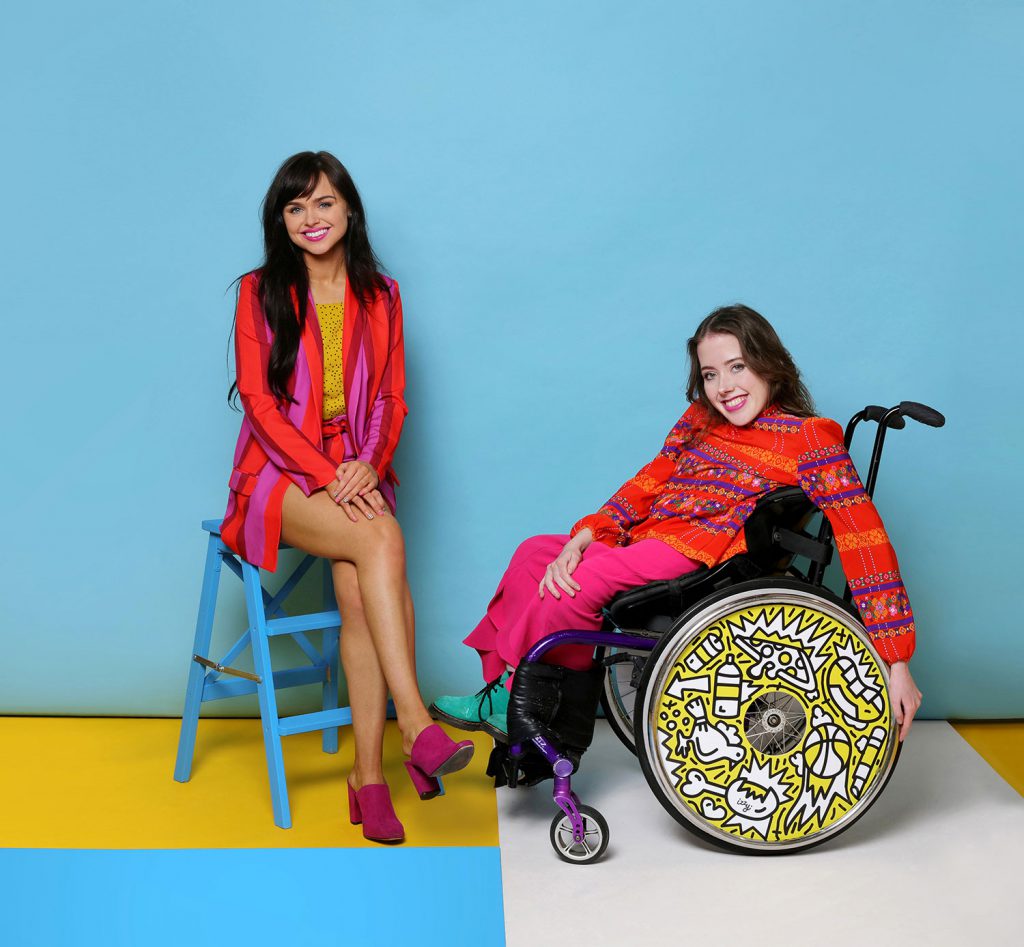
Having grown up together, and being extremely close, Ailbhe has a really good insight into what I and other wheelchair users around the world need. We want a way to show people who we are meeting for the first time that they don’t need to be afraid of being inquisitive about our mobility devices. It is perfectly legitimate to ask questions about them.
Ailbhe created the range of colourful interchangeable wheel covers to match my outfits and transform my wheelchair into a fashion statement. We created an Instagram account and overnight it went completely viral. A video we made got 3 million views in one day and Instagram made us their official story for 24 hours, which reached 250 million people. Suddenly everyone wanted our designs and artists and fashion designers from around the world were keen to get involved. At Ailbhe’s end of year show in the National College of Art and Design, someone working for RTÉ (our national broadcaster) spotted her project and said she would be really interested in featuring Ailbhe and I on a TV show called Nationwide. We very quickly realised the potential to turn our project into a business. We have worked incredibly hard every day since then to turn Izzy Wheels into what it is today.
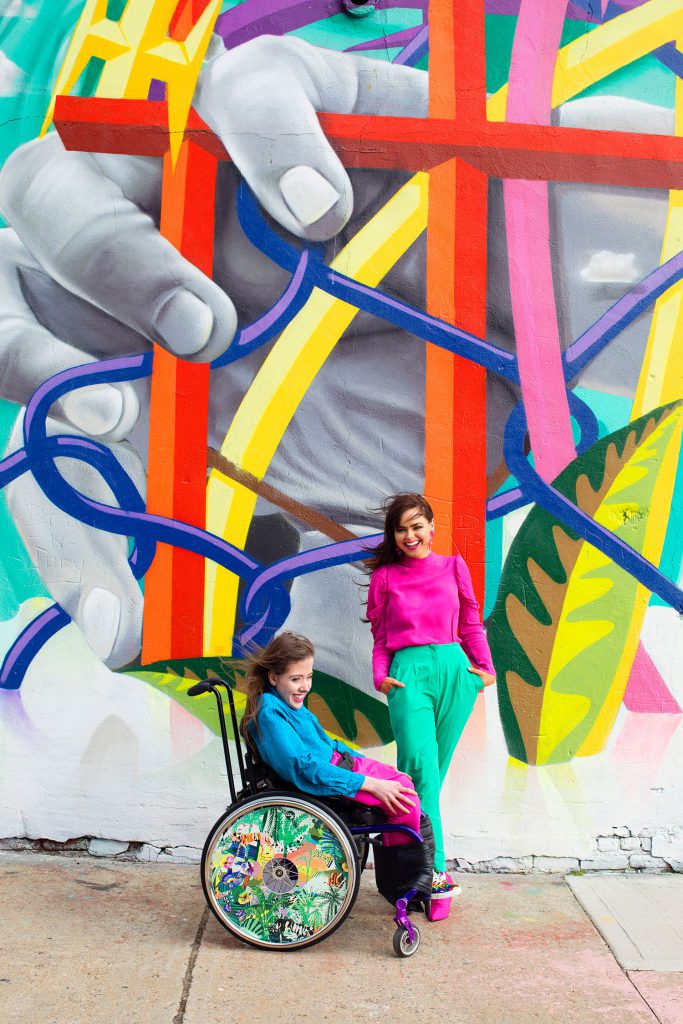
GR: How does it feel when you see the positive impact your work is having on people?
IK: It is honestly the most heart-warming feeling ever to have our ‘spokes people’ approach us on the street, or send us photos and messages via social media. They constantly tell us how as soon as they put their wheel covers on for the first time they have strangers coming up to them complimenting their chair! I feel so incredibly privileged to be able to give a platform to people like myself who have never before had their positive relationships with their mobility devices represented in the media.
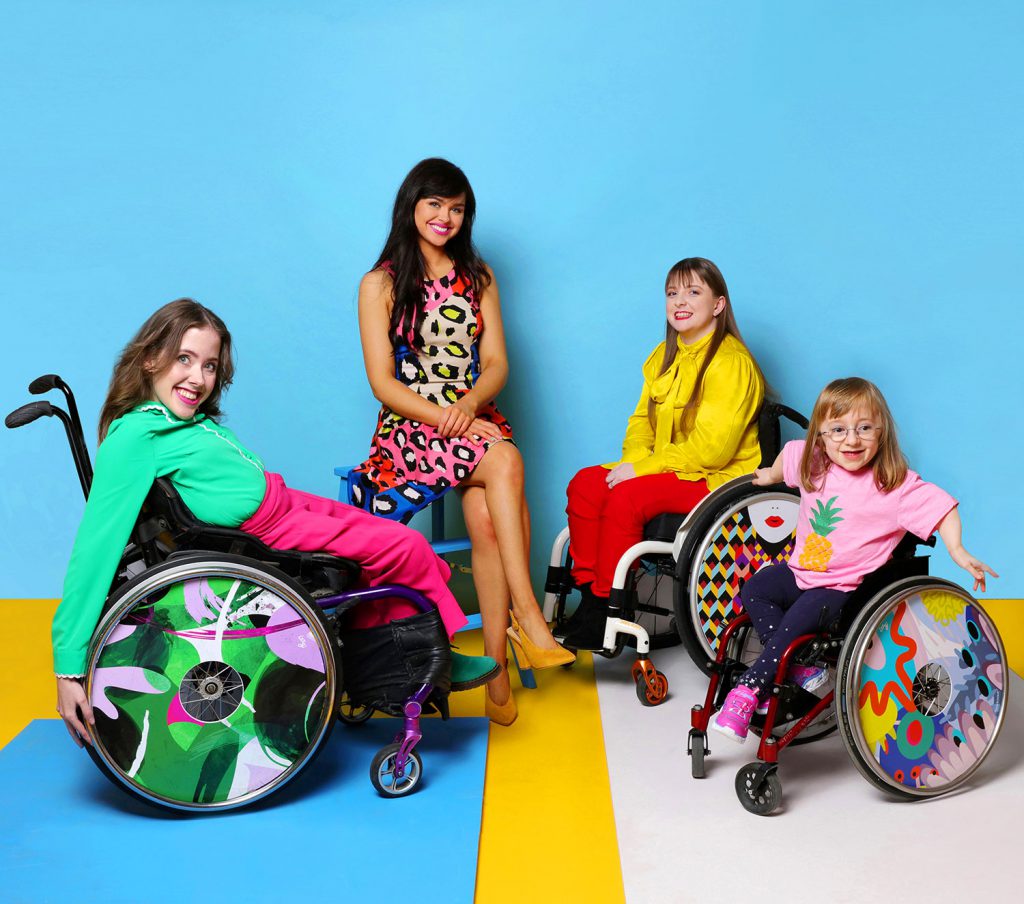
GR: Your story is obviously a very personal one, yet you now run a company with 40+ collaborators. Did you ever envisage how Izzy’s Wheels would take off when you started?
IK: I always knew that I was not the only wheelchair user out there who had a really positive relationship with their mobility device, but the response to Izzy Wheels has been absolutely incredible! I knew it would be really popular among my friends but the fact that we have customers from 35 countries blows my mind in the best possible way! When it comes to the business side of Izzy Wheels Ailbhe is so intuitive and hard working. She is the driving force behind its global success and it makes me so proud.
GR: You have been featured in Vogue, Teen Vogue, Cosmopolitan, Elle, Forbes, WWD, The Oprah Magazine, It’s Nice That and TechCrunch among others. You were also the first Irish people to be asked to take over Instagram’s official account, with a reach of 225 million people – which is amazing! Have you at any point felt the pressure of being prominent advocates for the disabled community?
IK: Absolutely not, it is honestly such an honour for me to be able to give people like myself – who have a positive relationship with their disabilities – a voice in the mainstream media. I have never for a second felt pressure from it. I love it!
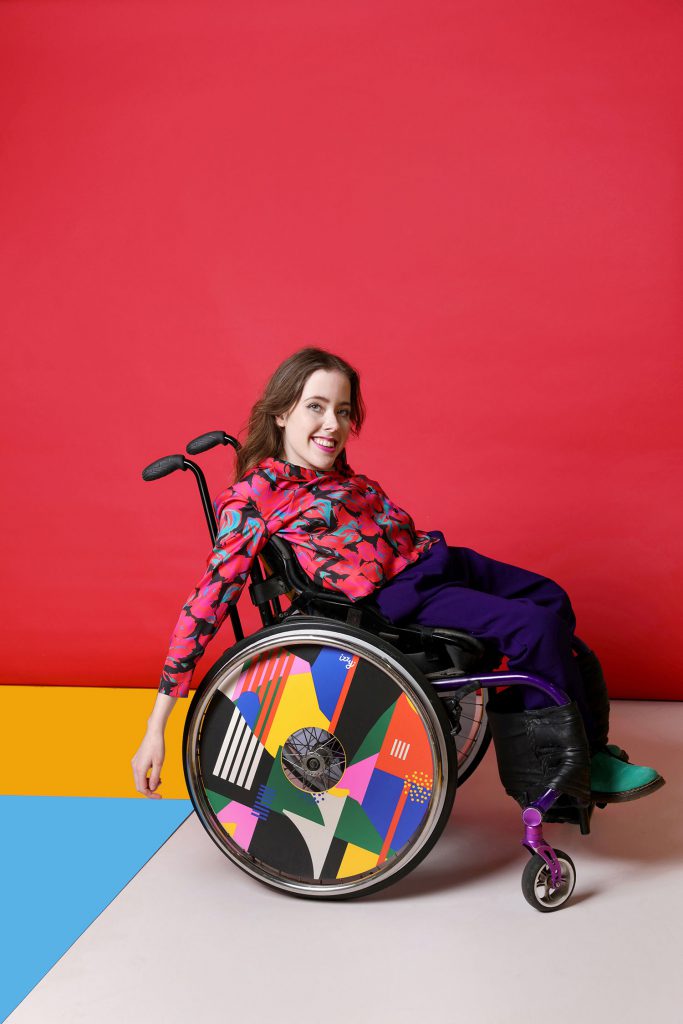
GR: We created the Body Beautiful exhibition because it felt as though recent changes in the fashion industry were shifting the focus on diversity and inclusivity from being a moment, to (hopefully) being the beginnings of a movement. How do you feel about the fashion industry’s current focus on diversity and inclusivity?
IK: I’m absolutely delighted that the fashion industry as a whole is making such huge strides towards inclusivity and representation. It has come so far in recent years in terms of fashion brands including people of diversity in their ad campaigns, but there is much further to go in terms of inclusivity. However, we want to see brands putting plans in place for long-term inclusive ranges in their collections and not just once-off pieces for publicity.
GR: The Disability theme within Body Beautiful was one of the harder sections to source catwalk examples for – as you’ll know, disability representation on the catwalk has a long way to go. Shows like FTL Moda’s Autumn/Winter 15 show ‘FTL Moda Loving You’ at New York Fashion week are paramount to changing attitudes around beauty and body standards. What would you like to see happen in terms of representation of wheelchair users on the runway? Would you consider collaborating with a fashion brand for the catwalk?
IK: The first thing that needs to be done in order to make catwalks more inclusive is to make them accessible to wheelchair users. Ramps should be incorporated rather than steps so that wheelchair users who are modelling can get onto the catwalk, and they should also be wide enough to allow a turning space for wheelchair users with different sized chairs to use the catwalk safely. Seeing Izzy Wheels in one of the major shows in New York or Paris fashion week is a goal of ours.
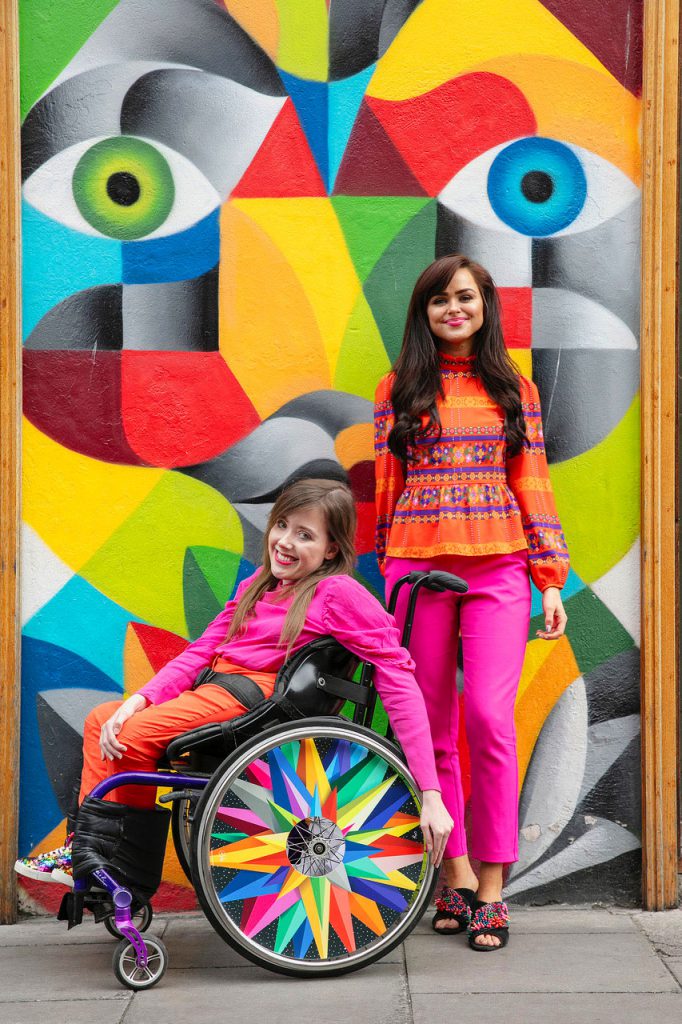
GR: Disability representation in editorial and advertising campaigns is also scarce – Grazia’s September 2018 cover marked the first time since Dazed & Confused’s ‘Fashion-Able’ issue (1998) that a major publication featured a disabled female model on its cover. How does it feel to see models like Jillian Mercado breaking down boundaries, modelling for the likes of Diesel and Ivy Park?
IK: It makes me feel so incredibly happy to see other wheelchair users being represented in fashion magazines. My hope is that soon it won’t be a novelty to see a wheelchair user or a person using another type of medical device in a fashion magazine, it will just be normal.
GR: Some big brands are moving towards working on adaptive lines, the most high-profile being Tommy Hilfiger. Do you see this as a positive step towards inclusivity in fashion?
IK: Tommy Hilfiger has made adjustments to their clothing such as one-handed zippers, side-seam openings, bungee cord closure systems, adjustable waists, magnetic buttons and Velcro, which make the fashionable designs much more disability-friendly. We see this as a very positive step and hopefully, it will inspire other high street brands to take action.
GR: What would you like to achieve next with Izzy Wheels?
IK: Designer wheel covers are our first product. We have plans to expand our range and offer other fashionable and functional pieces for people who use mobility devices. We are very passionate about creating an amazing brand where people’s needs have been carefully taken into consideration.
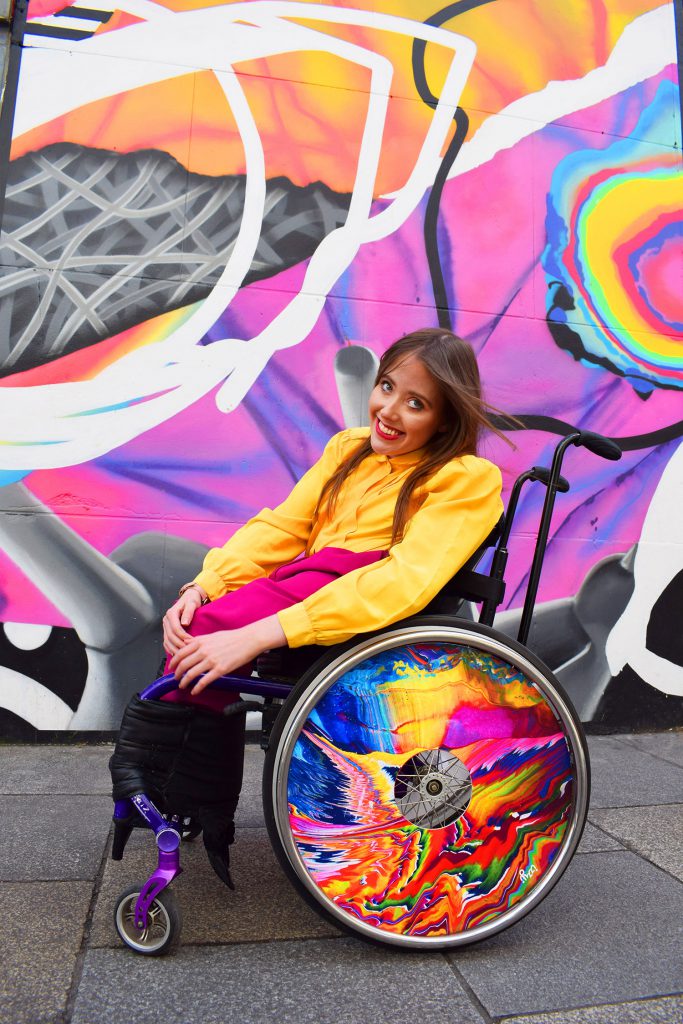
GR: And finally… your work turns a medial accessory into a fashion choice, turning conventional thinking on its head. What can we all do to change attitudes towards disability representation?
IK: We think it is really important for people in the fashion space to be encouraged to be excited about disability inclusion rather than guilt-tripped for not taking part in it in the past. The more people you are catering for the larger your market will be, so it’s a win-win for everyone!
Body Beautiful: Diversity on the Catwalk is on at the National Museum of Scotland until 20 October 2019. Entry to the exhibition is free.
Find out more about Izzy Wheels at www.izzywheels.com.
